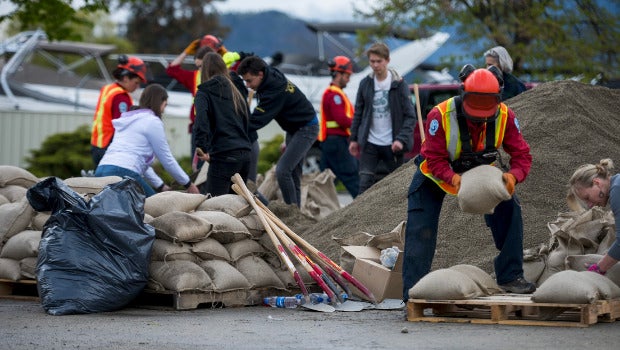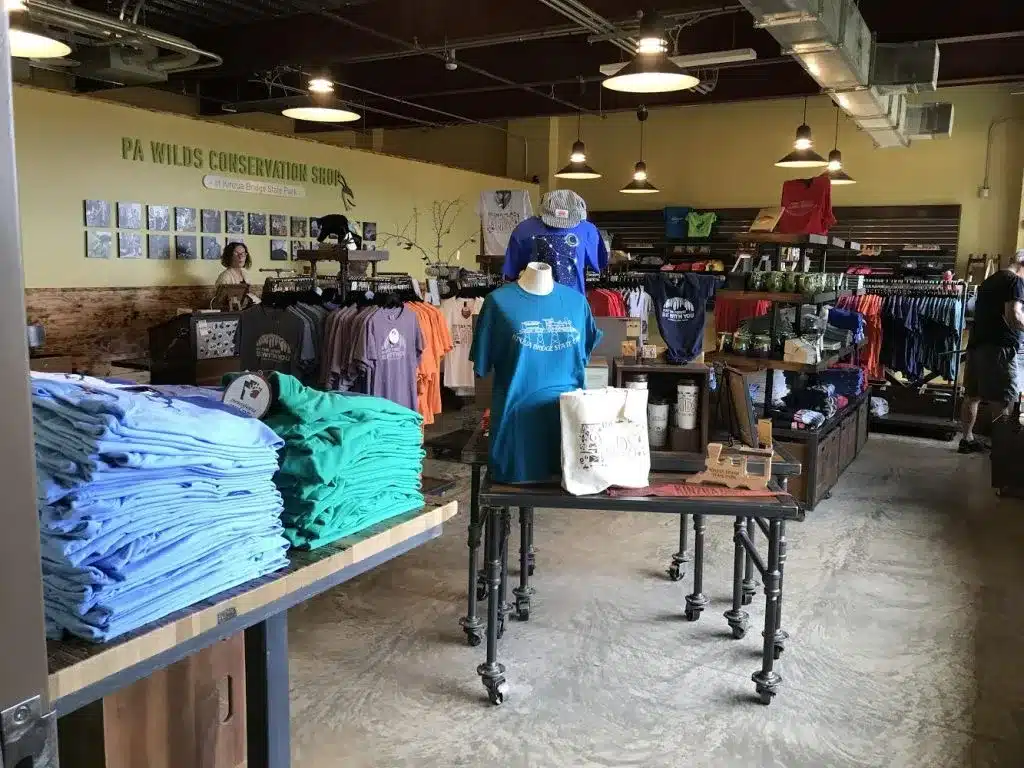Flooding, tornadoes, drought, wildfire, and other extreme weather events cause major disruption and damage wherever they occur and have potential longer-term negative impacts on natural landscapes, economies, and livelihoods. These impacts are even more acute for rural communities that may have smaller economies, fewer support organizations, and less capacity to respond at scale. So, it is more vital than ever for rural communities to start planning for disaster in the calm before the storm, well before a community is forced by circumstance to grapple with response and recovery.
Earlier this year, over 80 rural practitioners gathered virtually at the most recent Thrive Rural Open Field session to strengthen networks and share lessons and resources to help rural and tribal communities move towards long-term resilience from natural disasters. This blog curates many of those lessons and many resources for effective action shared during the session.
Start Your Planning Process Now
The topline learning from this session is that planning is crucial to creating a resilient rural community. Dollar for dollar, advance planning is less expensive than recovery costs; the federal government estimates that every dollar spent in planning for a disaster is worth six dollars spent in recovery. From this perspective, it makes fiscal sense for local communities to engage in disaster planning well before a crisis hits. Here are some resources to get started:
- State governments have programs to help communities conduct emergency planning (for instance in Oregon).
- You may also be able to connect with your state Cooperative Extension Service or local university for planning support—the University of Minnesota or Texas A&M are two examples shared during our session.
- Participants noted that the US Department of Agriculture has loans, grants, and resources for emergency planning and that USDA Rural Utility Service just announced an Emergency Community Water Assistance Grant.
- Participants also noted that the federal AmeriCorps and the new Civilian Climate Corps could be valuable resources for building capacity for resilience efforts within rural organizations.
Collaborate to Succeed
Many rural areas face challenges like low population density and lower local capacity. To fill this gap, participants spoke about the need for a regional approach to rural disaster planning. Coordinating and collaborating regionally allows a greater spread of communities to work together to prioritize scarce planning resources.
A few participants shared their experiences developing local and regional COADs and VOADs (Communities/Volunteers Active in Disaster) as one way communities are preparing for future disasters. These community-based planning models are helping communities fill gaps. Small non-profits and community members work together with local, state, and federal emergency services folks through the COAD process to identify gaps and plug-in resources and plans that help strengthen local disaster preparedness and recovery structures.
Other participants shared that rural development hubs, including community foundations, have great potential to act as regional conveners and connectors in the disaster planning process. A local rural development hub can help establish agreed-upon roles for various stakeholders (including non-profits), develop processes, and facilitate coordination of the emergency response and recovery systems.
Centering equity and culture in disaster planning response
Pre-planning is also crucial to integrating and centering the most vulnerable. While disasters are unpredictable, what is predictable is that disaster places a disproportionate burden on marginalized populations – the most vulnerable community members. One practitioner noted that “a community is only as resilient as its most vulnerable residents.”
Whether it is people of color who have been structurally discriminated against for decades, elderly and other less-mobile populations, low-income residents living on less desirable, flood-prone lands, or non-English speaking residents who are less likely to access public services, participants agreed that our most vulnerable neighbors must be centered in disaster planning. As part of the planning process, we need to analyze and adjust policies to lessen vulnerability, for instance, prioritizing affordable and rental housing following a disaster.
In too many rural areas, systemic racism dominates the allocation of resources, including dollars for disaster resilience. One participant noted that many rural communities are non-entitlement units of government, meaning that federal resources flow through state agencies and boards rather than directly to a community. From this person’s experience, resilience resources were allocated by a board that excludes Black communities from both a seat at the table and equitable access to those resources.
For indigenous communities, local cultures provide strengths and knowledge that can help the resilience planning effort; many attendees strongly endorsed the need to consider indigenous culture during the planning process. One participant noted that weather disasters are at the center of many traditional stories, including creation stories, and non-tribal partners should be cognizant of those cultural beliefs when working with tribal communities. Creation stories involving weather disasters will impact the way indigenous people and communities engage in the planning process. A planning effort will be more effective if it acknowledges and draws on those indigenous traditions.
When done right, the planning process can change the governance of a community, and working together for recovery builds relationships and activates new leaders. Participants shared how they are working to increase the voice of marginalized groups in the planning process: For some, it means developing new community leadership through an inclusive and organic process, where residents from the community sector come together to contribute to the planning process. Others acknowledged that, especially in the face of historical and systemic discrimination, there is a need to strategically organize and share knowledge to build power within the community to achieve systems change. One participant shared that MDC has created a new tool and platform for inclusive disaster recovery.
Health and Disaster Recovery
From human casualties to loss of property and community identity, natural disasters can have a major health impact, and the need to address mental health and trauma rose to the top of the conversation for many participants. One participant noted that crisis counseling programs through the US Department of Health and Human Services are a potential resource for rural communities if a federal disaster occurs. Once the cleanup is over and rebuilding is underway, families (especially those with children) are too often left without the support they need to grieve, cope, or understand a disaster’s long-term impacts. Participants noted this need for long-term mental health support as a significant gap that needs to be considered in future resilience planning efforts.
Community resilience efforts can have positive health consequences as well. Multiple participants noted that prior planning efforts made local COVID-19 pandemic response more efficient or effective. For instance, local experience going house-to-house following a hurricane meant that volunteers understood protocols for connecting safely with community members. Likewise, one participant noted that the need to communicate with vulnerable populations for pandemic response is morphing into a long-term solution for resiliency within their community.
Quick Resilience Planning Tips
- Analyze what you need. Use a planning process to build consensus on what your organization and your community need in the aftermath of a disaster and for long-term recovery.
- Make a list. Develop and share phone lists for fast response, including lists of names and agencies to call for help.
- Keep the power on. Deploy generators in advance to critical locations like water stations to keep the water flowing during a crisis.
- Use technology. Consider adopting an app that sends out alerts. There are open-source software packages to help with disaster planning and recovery that are already tried and tested. Those should be available through regional agencies that can vet them for local applicability.
- Establish a backup. Decide on backup meeting locations for your organization’s staff, and arrange backup locations for residents should they have to evacuate. Partnerships with organizations and communities outside of your own will be key if you have to evacuate your area completely. Ensure your organization has its files and records backed up in separate locations.
- Grow your own. Develop local community gardens to grow more food locally and create stockpiles of emergency supplies. Community gardens will also help with long-term resiliency and reduce food deserts.
- Support your own. Consider starting a community mutual aid fund with the help of a local bank or community foundation. Banks across rural America help finance disaster recovery efforts, and federal bank regulators monitor this work and publish reports on this activity.
- Source Donations. Develop a curated list of trusted organizations for donating or investing in disaster-response zones for the most vulnerable populations immediately after an event/incident. Aspen CSG created such a list after the recent Kentucky and Midwest tornados.
- Understand trauma. Have volunteers assess and link people to therapists if need be. Provide mental health services, and connect with groups that provide books on resilience and coping with loss and fear to children.
Three Gaps That Still Need To Be Filled
- There is a gap in the capacity of local non-profit service organizations to secure and administer funding for rural disaster planning, mitigation, and recovery. One participant noted, “there is so much help being thrown at communities, but it’s next to impossible to get your ducks in a row to take advantage of any of it.” As a result, federal funding often gets left on the table because of the lack of local capacity and/or experience in managing federal grants.
- There is a gap in rural communities’ knowledge and experience in incorporating natural land and water systems to help mitigate impacts. More needs to be done in the planning process to understand how geography and watersheds can aid adaptive planning. Natural systems provide free functions to all if well stewarded and shared, and our lands and water systems are a critical part of a resilient future for all people. Planning must address natural systems, not just human-built infrastructure. More data is needed that demonstrates the local current and future impacts of climate change so disaster plans continue to be relevant and helpful.
- There is an understanding gap between rural communities and those outside rural places who steward resources. Greater advocacy at the state level is needed for rural and tribal communities – too often, state-level policies are out of touch with realities in rural communities. More tools of comparison are needed so that other levels of government understand the resources (or lack thereof) available by rural zip codes. More help is needed from larger agencies, federal partners, and other system actors to design policies tailored for rural realities.
Next Steps On Rural Resilience
Aspen CSG is building momentum to better support rural communities’ drive for rural resilience. Over the next few weeks, we will host the next Thrive Rural Action Learning Exchange (TRALE) process on the question: what will it take for rural and tribal communities to make progress toward long-term resilience from natural disasters? The TRALE will engage experts in the field and participants from our Open Field session and culminate in a call to action on rural resilience. We’ll keep you updated on this effort as it develops.
Hosted by Aspen CSG, Thrive Rural Open Field sessions are relaxed, conversational gatherings where rural and tribal community and economic development professionals can meet, share stories, swap lessons, and build community. Sign up for our email list to stay up to date on this event and others.
This piece is part of In Focus: Rising to the Climate Challenge, a multimedia informational campaign that draws on the expertise of Institute programs. We look at four main facets of the climate change issue—labor and the economy, youth and education, public health and safety, and communities. To get campaign updates and other news from the Aspen Institute in your inbox, sign up for our newsletter.







